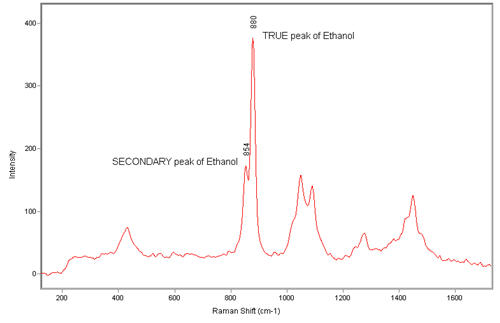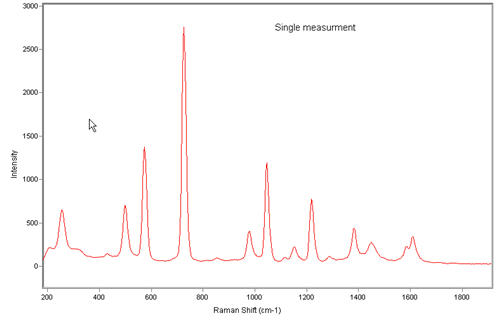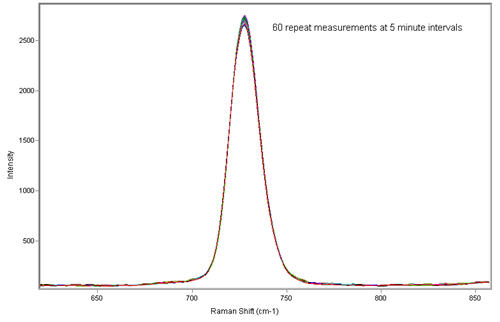FAQs - Grating Based Wavelength Isolation
- What is grating-based wavelength isolation
All low-cost Raman instruments use multi-mode lasers as excitation sources. It is very critical to be able to isolate the main lasing wavelength before it is sent out to the sample. If other modes are present, secondary peaks may arise in the spectra, as shown in the spectrum below.

Grating-based wavelength isolation is a propreitary, patented process for isolating a single wavelength (by using a grating), to ensure that only the 785 nm (or 532 nm) line is sent out to the sample.
- What are the advantages of grating-basd wavelength isolation
Isolation of the laser wavelenth results in very high x-axis reproducibility. This is a very critical requirement for library-building and identification.
As an example, consider a spectrum of o-xylene, recorded on our PeakSeeker™ spectrometer. Below is a single spectrum. Of importance is the strongest peak at 728 cm-1.

The next figure shows a closer look at the region around 728 cm-1, for 60 spectra of the same o-xylene sample collected over a 12 hour period (spectrum acquired at every 5 second interval). The reproducibility of the x-axis is better than 1 cm-1.
